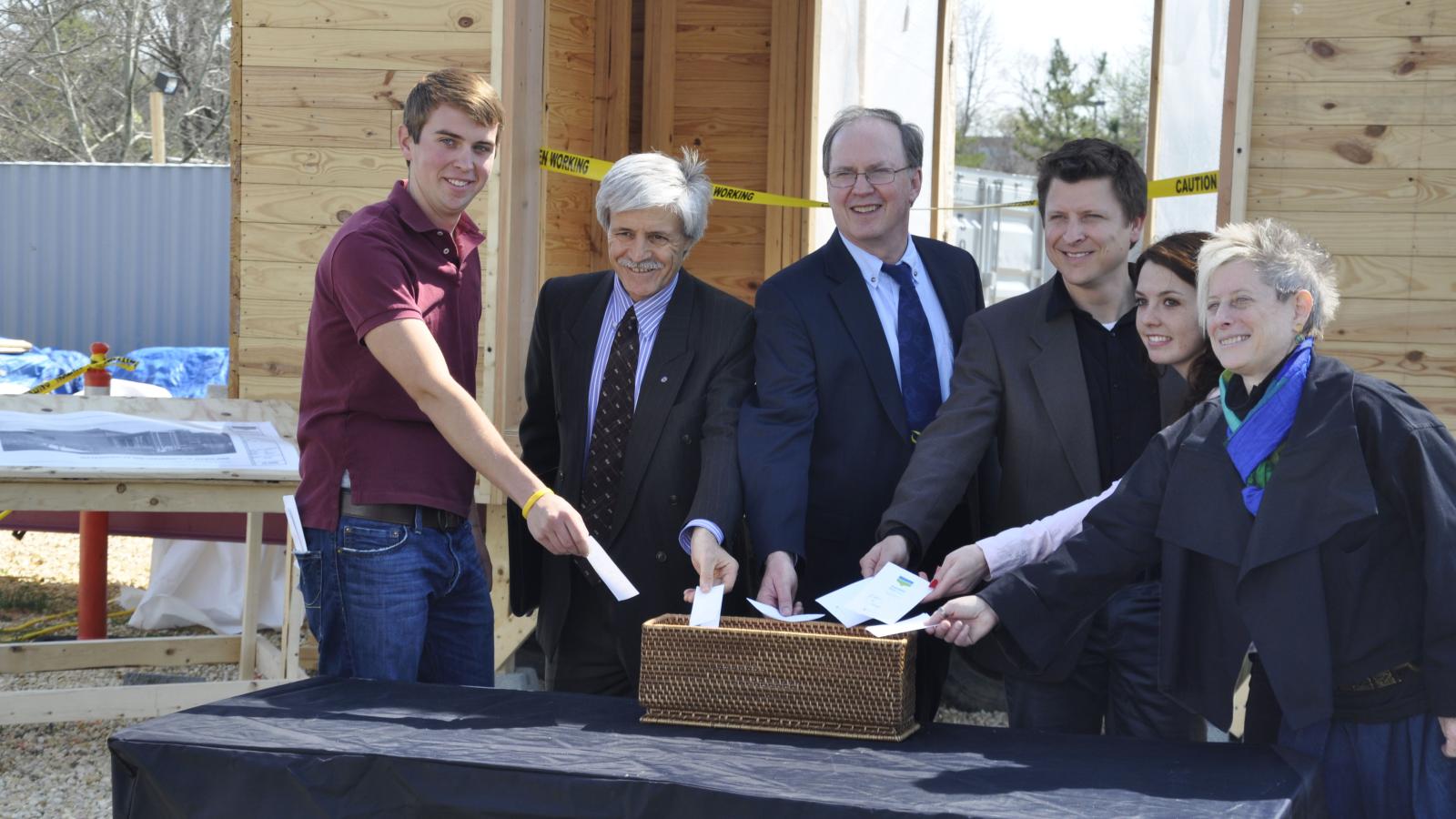If you look through the hundreds of photos taken of Clinical Professor Amy Gardner at the University of Maryland, there’s one thing that sticks out—and it’s not her signature asymmetrical hairstyle. It’s that she’s rarely alone. In shot after shot, she’s huddled around tables with students, or one of dozens of heads in a team picture, or peeking out from behind colleagues scribbling on a whiteboard.
It’s not because Gardner avoids attention (although she does), but because of a philosophy she has carefully constructed during her tenure at Maryland—that architecture is not an “I” but an “us” effort rooted in interdisciplinary teamwork to deliver a holistic, collaborative curriculum that mirrors the practice–and delivers thoughtful, award-winning design concepts.
Gardner, who retires this month from UMD’s Architecture Program, is one of the literal architects of ARCH 600/611, Integrated Design Studio and Advanced Technology, a cornerstone of the program’s curriculum that set a national standard for how architecture is taught by the National Architectural Accrediting Board for programs across the country. It is design that pays as much attention to systems and materials as to form, and where the environment is as much a stakeholder as the client.
ARCH 600/611 also served as the foundation for two award-winning U.S. Department of Energy Solar Decathlon entries: the 2nd place 2007 entry, LEAFHouse and the 1st place overall 2011 winner, WaterShed. Beyond trophies, is its manifestation in projects—through her thriving practice in Washington, D.C.—and people, in the legion of students, who now gravitate towards a collaborative design process for the greater good.
“Amy has made true believers in sustainable architecture for multiple generations of students,” said former student and Associate Clinical Professor Brittany Williams ’05, M.ARCH ’07. “She has extraordinary abilities to organize people and processes, building multidisciplinary teams of academics and practitioners that defy the solo structure of the university.”
Gardner will be the first to say that what ARCH 600/611 is today, is an amalgam of the people who she’s worked alongside for 35 years at MAPP. After being hired in 1989, she taught courses in materials and methods, eventually building off Professor Greg Wiedemann’s course to create the first iteration of Architecture 600/611 in 1992. It was a laboratory for big ideas and trial and error—where research, technology and analysis became key components of the design curriculum and where faculty were sharing their expertise, but also learning right alongside the students.
“Amy is just so talented and gifted in the way she thinks and draws and her design sensibility,” said colleague and friend Associate Clinical Professor Julie Gabrielli. “She has such a mind and I think that’s what I’ll miss the most, watching her distill a complicated thing for students into something clear and seeing them just in awe of it.”
Beginning in 2005, Gardner led two U.S. Solar Decathlon entries through the arduous, two-year design/build process and eventually to net-zero glory. During her years in the trenches of decathlon houses, she approached crises, obstacles, university presidents and corporate sponsors with the same measured calm and resourcefulness, relishing in what the experience was offering her students.
“We’d have these evening meetings with all of these people from different professions and disciplines with this singular vision of this house,” said Gabrielli, who was a faculty advisor on LEAFHouse. “Amy and I would sit in the back of the room, sort of freaking out and saying, ‘This is really happening! This is what we dreamed about.’ We set this thing into motion, but really, she set this in motion.”
Gardner’s reputation as a funny, thoughtful and insightful designer made her a sought-after mentor and collaborator, known to enthusiastically cheer good ideas and provide supportive encouragement and counsel in times of discouragement, even in the wee hours of the morning. She was equally known for her strong opinions and enthusiastic delivery, which she frequently peppered with colorful language.
For women in particular, Gardner served not just as a role model for navigating two male-dominated fields, but as a champion, investing her time and energy to mentor junior colleagues and former students.
“She’s so invested in people and pushes them to do those things that will best support their career,” said Williams, who now works with Gardner in practice. “She created such an openness and commitment to my career and allowed me the ability to engage with academia and the professional side, when not all employers are.”
After UMD, Gardner will continue her “strength-in-numbers” philosophy in practice, which has won her firm acclaim and a reputation among peers in other disciplines for bucking the traditional architect stereotype—one she hopes is her legacy at Maryland.
“I'm uncomfortable with thinking of any one person, particularly me, as being the leader. It’s really a group thing,” she said. “It always was a group thing. And, that's the point. We can't solve these big problems as singular voices.”


